Drop Tower
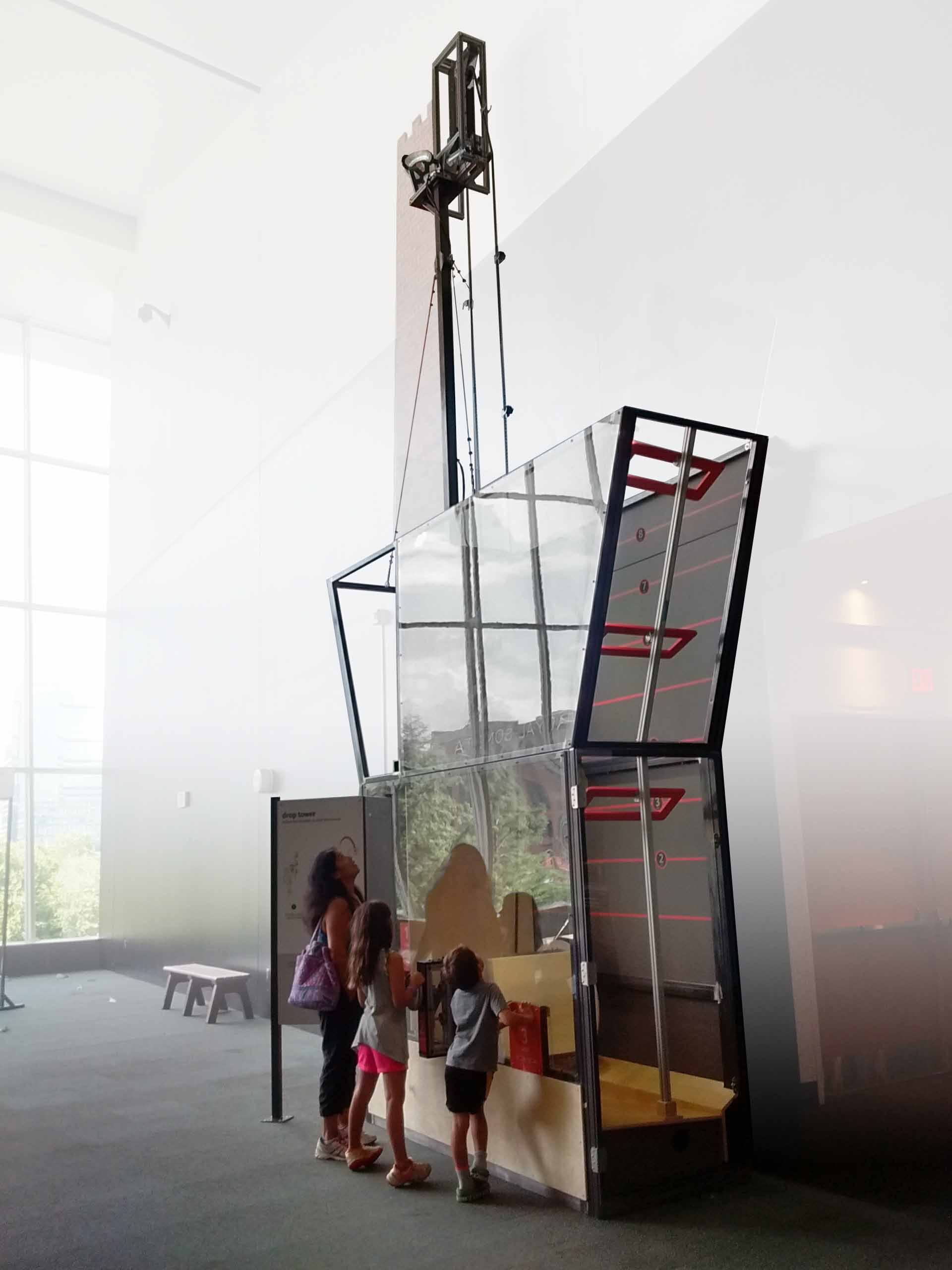
The Drop Tower enables visitors to repeatably drop a racquetball 20 feet onto an angled surface. The angle and material of the surface can be changed, enabling users to experiment with the 2 variables and discover how they affect the trajectory and bounce height of the ball. The targets provide a goal for visitors to aim for, though many simply experiment on their own.
Process
We built and tested several prototypes to determine whether or not our plans were visitor-friendly, the reliability of the 'dropper' mechanism, and the feasibility of the chain conveyor. See the prototyping page for details.
Challenges
Reliability was a serious concern since some of the working parts are 20 feet in the air, and difficult to access.
The height of the design was difficult since the museum lacks an appropriate lift or convenient ceiling lift points. The shop ceiling is not much over 8 feet, and the freight elevator is very small, so the components were built in sub-assemblies, test-fit and finished in the shop, and fully assembled on the exhibit floor
Design Details
- Gear reduction and a rotary damper prevents visitors from spinning the Prism in an uncontrolled fashion
- Controls for steps 1,2, and 3 (Load, Adjust, Drop) are arranged in sequential order for intuitive operation
- An angle indicator makes the experiment replicable
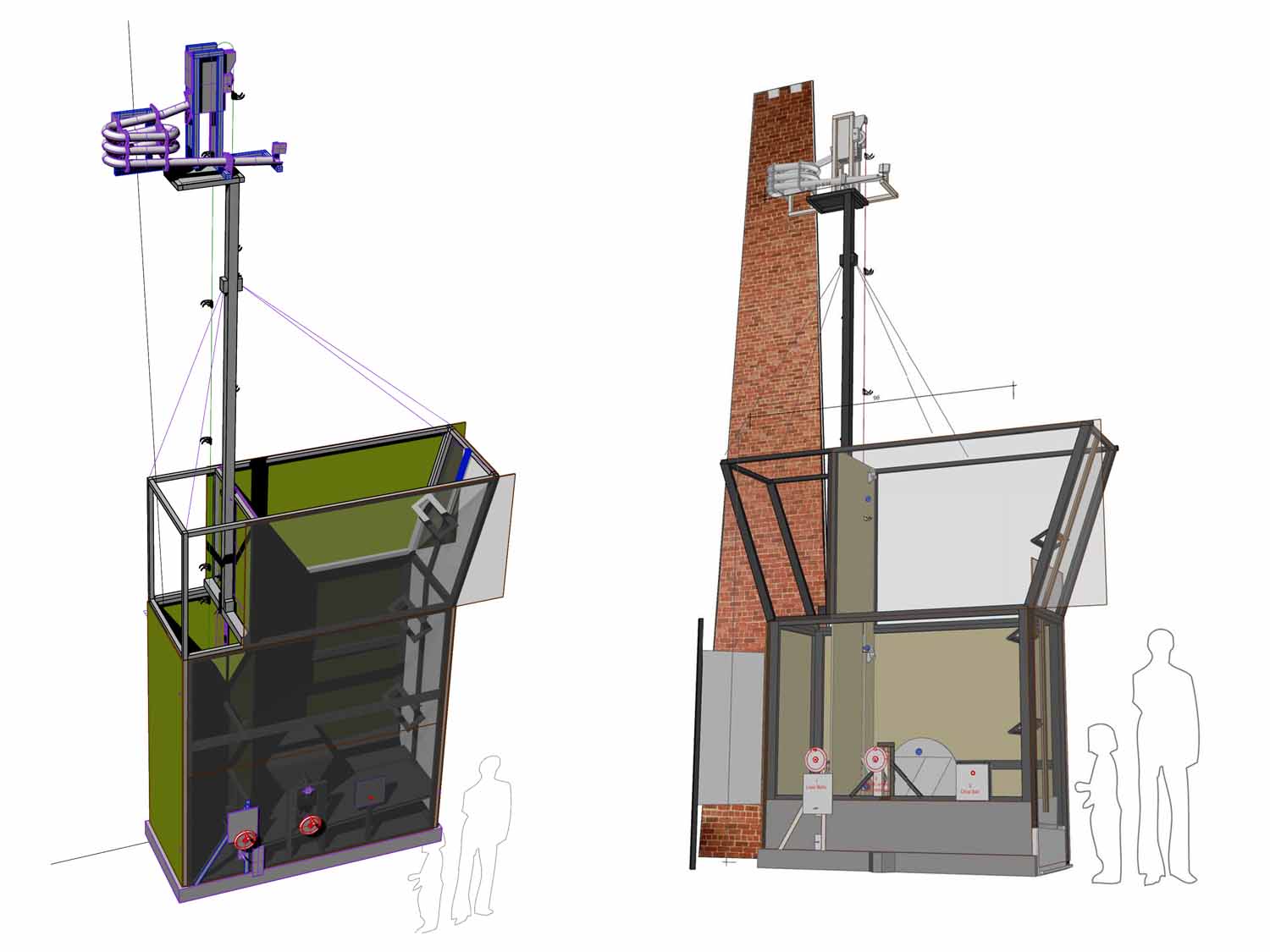
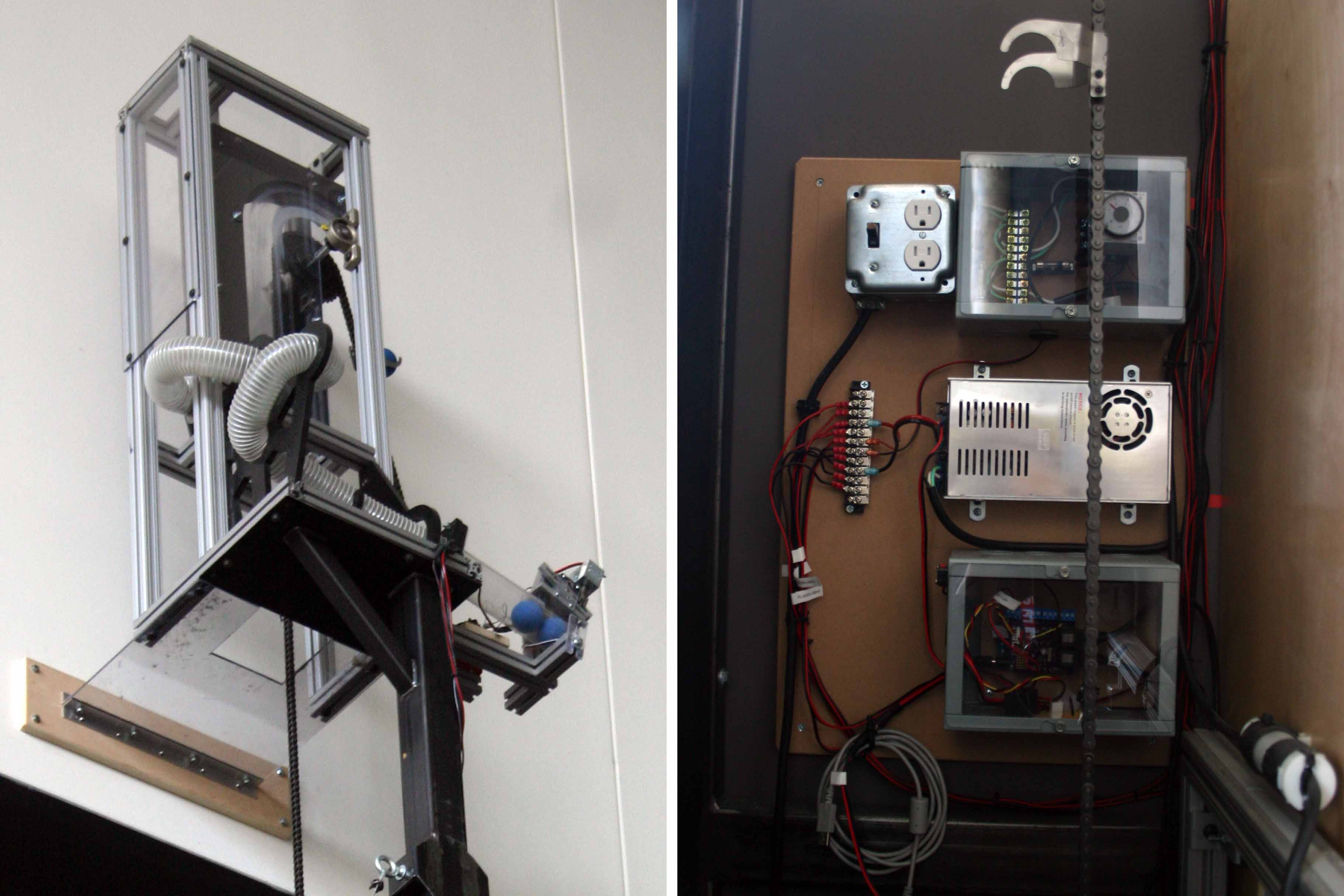
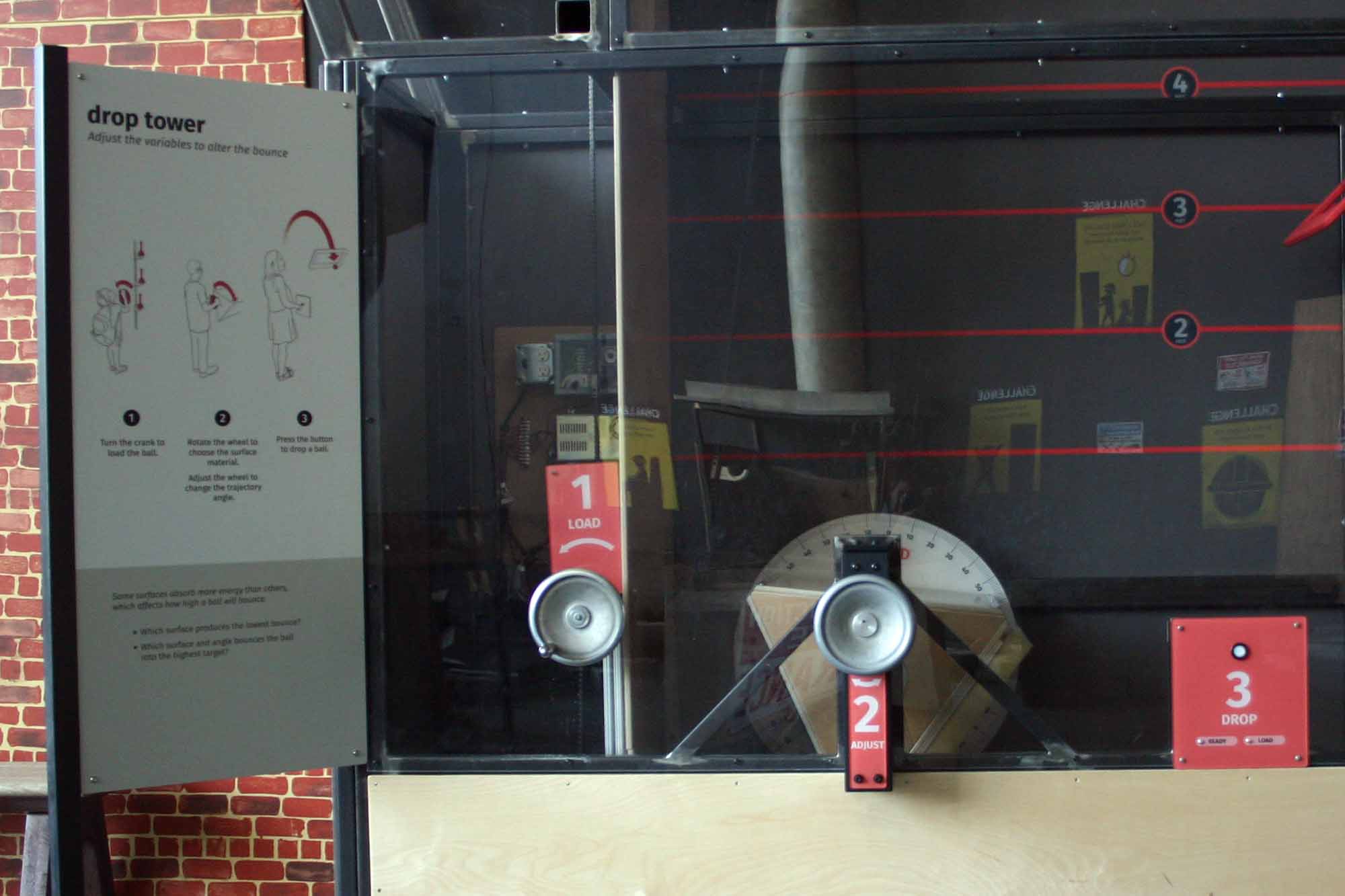
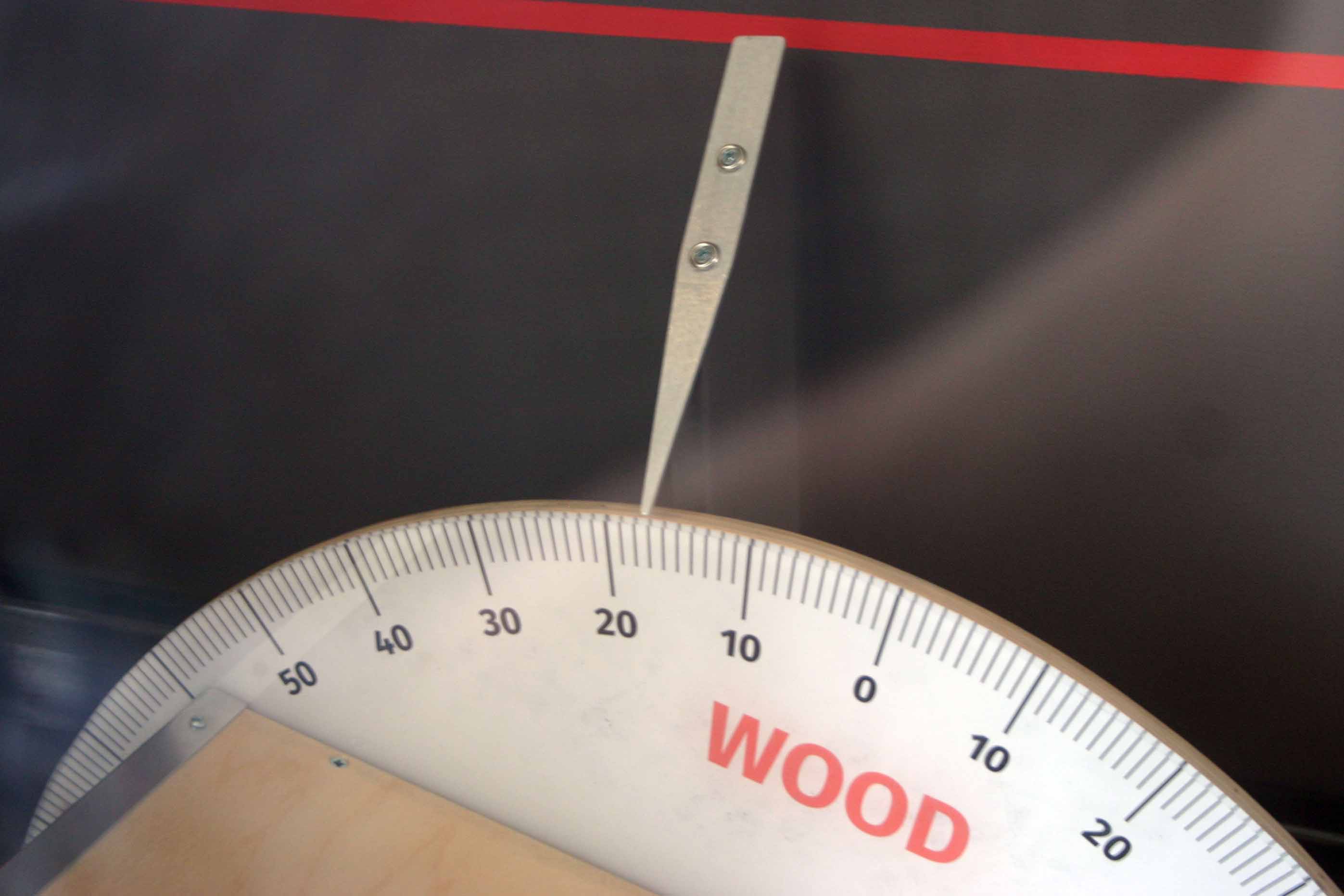
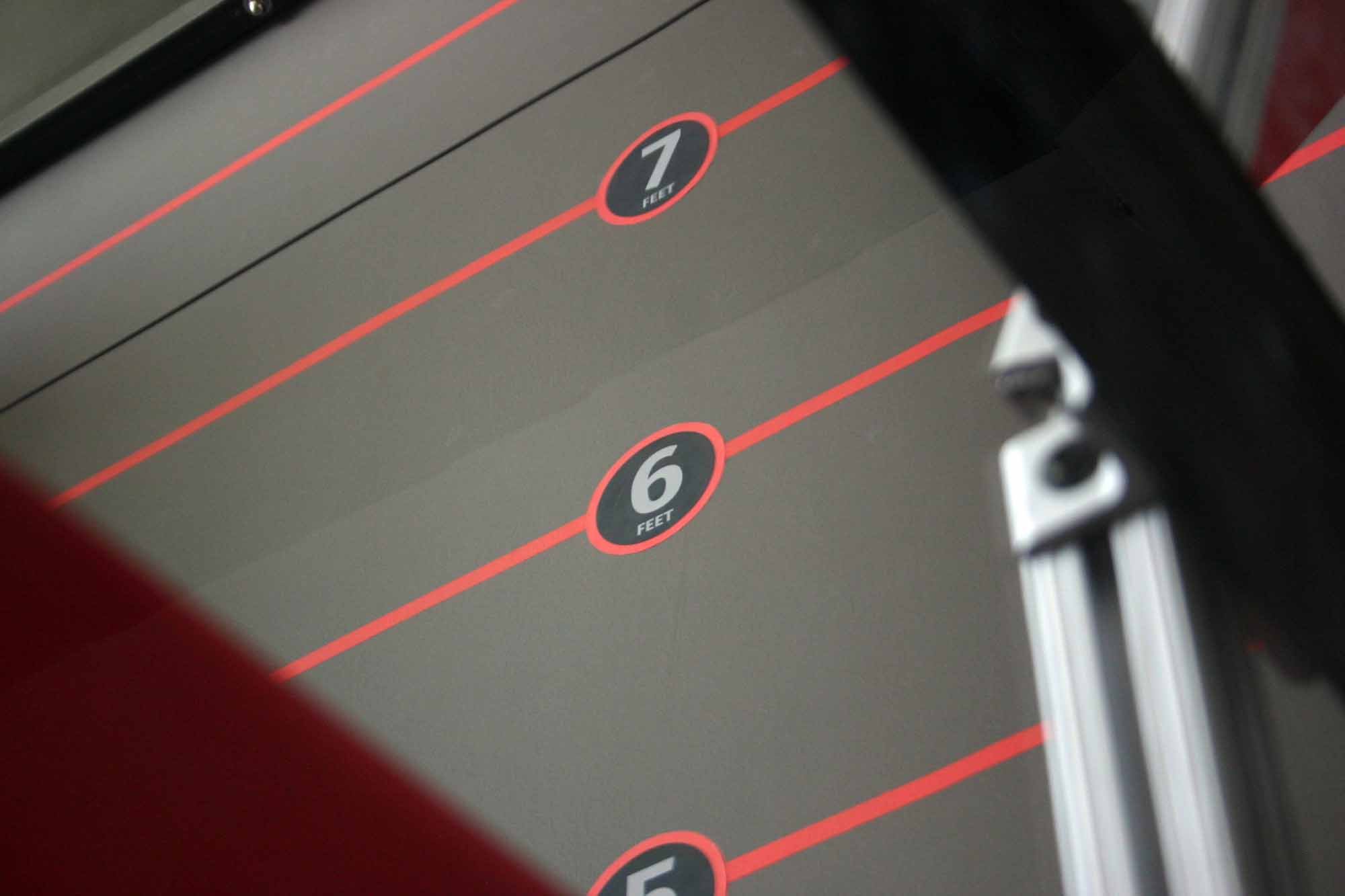
Construction Drawings
Below are examples of construction drawings I created with Solidworks. They were given to a commercial welding company, who fabricated and delivered the pieces. Cole handled the Solidworks model of the dropper mech, see credits below!
For more examples, see Drop Tower CD's
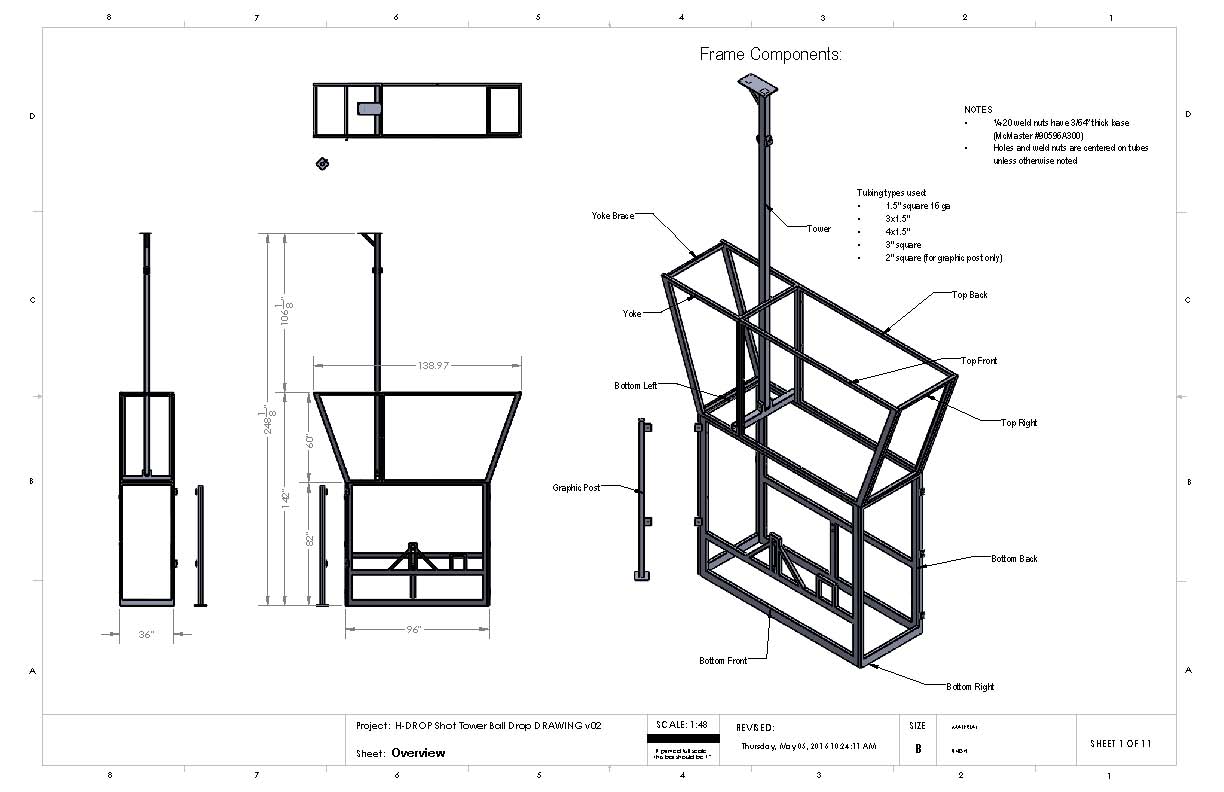
Meta
Roles
- Cole: ball-dropper mechanism, top-module design, fabrication
- SV: project management, design, fabrication, graphics, electrical, install, break-in, documentation
Other Contributors
- Karl Palm: volunteer advisor for electrical and mechanical engineering
- Cole Pritchard: museum employee
- Nilam Sari: museum intern
- Jacob Nemec: museum intern
- Paul Stankiewicz: volunteer
Location
- Maryland Science Center, Baltimore MD
Installed
- 2016